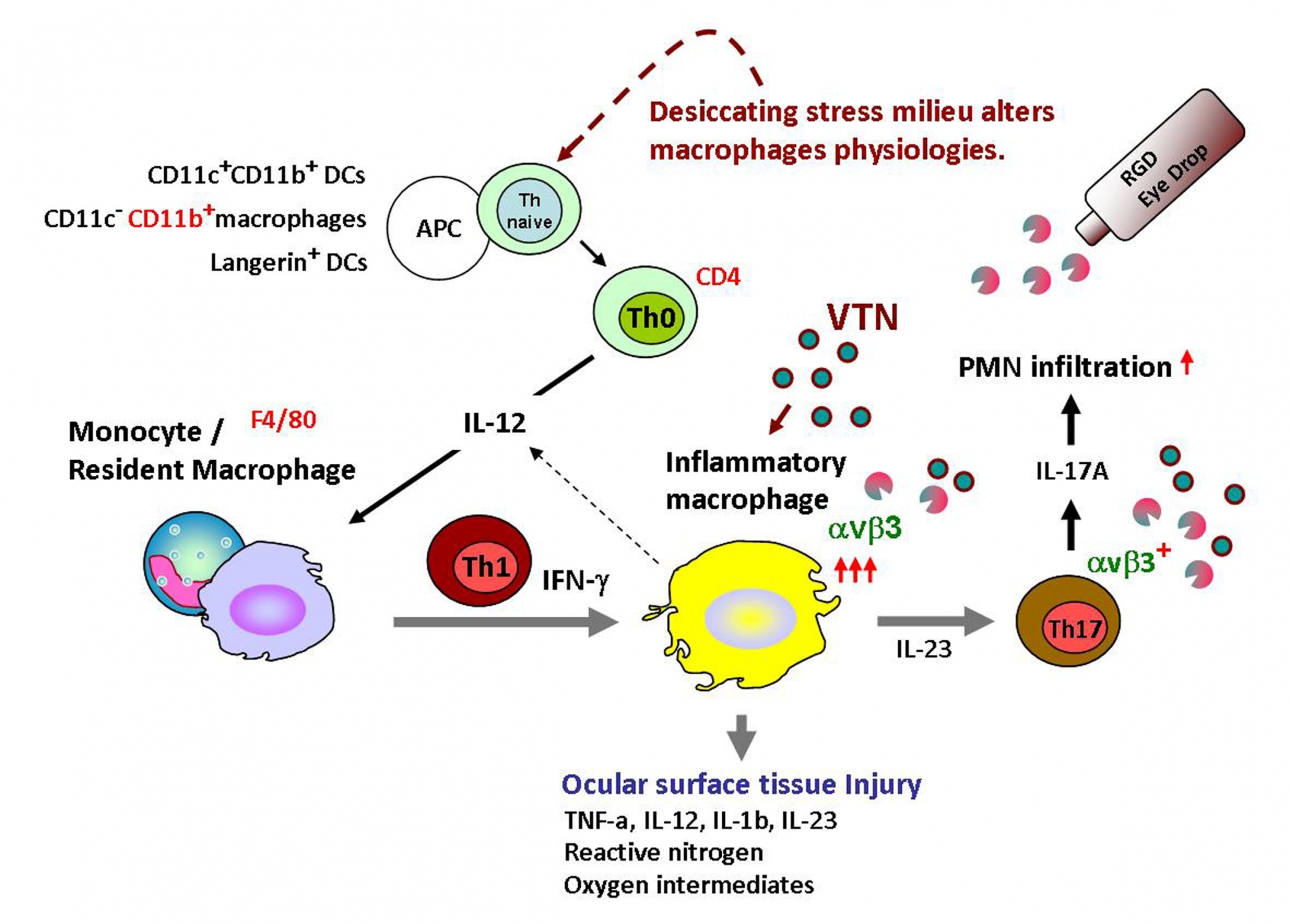Introduction
Dry eye disease is common in ophthalmology diagnosis and treatment; it is more likely to occur in the elderly, women, smokers, and contact lens wearers. Dry eye syndrome causes a lack of tears and damage to the surface of the eyeball. Currently FDA-approved drugs include Restasis and Xiidra; the former is slow-acting, while the latter is more effective for early-stage dry eye disease. Moreover, the two have no obvious medicinal effect on eye surface damage. In the middle and late stages of dry eye syndrome, the damage to the ocular surface worsens, and the main immune regulatory cells are macrophages. There is currently no targeted drug. We used animal models of dry eye disease to study drug mechanisms and found that after treatment with a patented drug (RGD-class peptide), clinical symptoms such as corneal damage, reduced tear production, reduced goblet cells, and increased inflammatory cytokines were improved. RGD inhibits the inflammatory state of macrophage receptor αvβ3 by antagonizing it, providing a new pharmacological strategy for the treatment of dry eye disease.
Features / strengths
1.Fulfill unmet medical need
2. Low Toxicity
3.Pre-Clinical animal model close to human pathology
4.Display excellent therapeutic efficacy on dry eye animals
5.In vitro model is available to estimate drug bioactivity
6.No further effort is required to ensure the drug synthesis & quality- It can be synthesized chemically by an automated instrument abiding by GMP standard without any technical issue. The cost of manufacture is acceptable.
Specification in detail
Under development
Seek of partners for business cooperation


